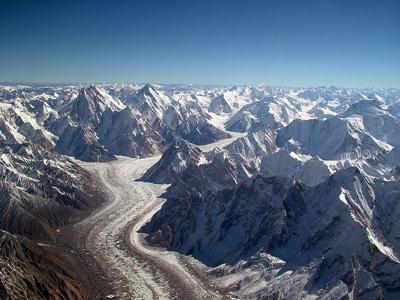Very technical, a litle difficult to understand

Drop size distribution
This article is very technical. It talks about math but doesn't give very much information about the actual math involved. It talks about the formulae for scaling constant but only says they are named after the researchers who devised them. Who cares?
Tell what one of the formulas look like and maybe how it is used. The definition of mathematics paragraph is helpful and does give some very good information. especially when talking about the decibel scale. The exponential algorithm from the computer says the math depends on whether we are expecting snow, hail or rain. What is it is sleeting? It shouldn't what kind of precipitation is falling only that there is precipitation. All precipitation eventually turns to liquid anyway, so you should only worry about amount of liquid precipitation is accumulating.
Math is the only way to predict the weather. Not sure how I know this but its true. Math gives us average temperatures, rainfall probabilities, and weather destructiveness. How is a tornado measured? The Fujita scale, and how the Fujita scales takes many factors to calculate.
People should care about math in the weather because weather is constant. Weather is always around us. It may not seem like it is, but there is still math involved when calculating barometric pressure and humidity or wind chill.
Barry's Response - A process started nearly a century ago called
Numerical Weather Prediction uses the world's most powerful computers to forecast weather.
Everything can be reduced to math, and that works pretty well. Here's the Marshall-Palmer reflectivity relationship.
Radar Reflectivity is Z in decibels (dBZ):
(Z) = ∫ N(D) * D6 dD R
= π/6 * ∫ N(D) * D3 * W(D) dD
D is a raindrop diameter
N(D) is the number of drops of that size per m3
W(D) is the raindrop falling velocity at that size
R is the
rainfall rate
Many empirical formulas convert dBZ, so we can skip this convoluted theory. These are some I picked up from wikipedia https://en.wikipedia.org/wiki/DBZ_(meteorology):
R (mm/hr) = ((10(Z/10)) ÷ 200))(5/8)
There are a lot of commonly used ones that go like Z = A x Rb where A and b are the empirical constants. In some rain situations, 300 and 1.4 are used, in others, 200 and 1.2. For hail and snow, you can use other sets of numbers.
Search this site for more information now.
Math is used to calculate
average temperatures, rainfall probabilities, and tornado damage. Here are a few examples:Sensors don't automatically distinguish amongst snow, hail, rain, and sleet. Math helps ancillary computers determine what kind of precipitation is falling and how much liquid precipitation is accumulating.
There's a mention of the Fujita scale, which measures tornadoes. Tornadoes are rated by their intensity, and of course this rating involves math.
There's the mathematical formula mentioned above for radar reflectivity (Z = / N(D) / D6 / dR). It might be complicated, but we can understand how radar data is interpreted.
Empirical Formulas: (like those given above) that are a bit easier to use. We can then insert modified formulas (or alternative numerical constants) for different types of precipitation.
Weather forecasting is done with the world's most powerful computers. So it's not hard to understand how technology and math work together.
Because weather is constant and always around us, math is used in weather forecasting. There are calculations for barometric pressure, humidity, and wind chill.
Join in and write your own page! It's easy to do. How? Simply click here to return to Math rules!.
Do you have concerns about air pollution in your area??
Perhaps modelling air pollution will provide the answers to your question.
That is what I do on a full-time basis. Find out if it is necessary for your project.
Have your Say...
on the StuffintheAir facebook page
Other topics listed in these guides:
The Stuff-in-the-Air Site Map
And,
Thank you to my research and writing assistants, ChatGPT and WordTune, as well as Wombo and others for the images.
GPT-4, OpenAI's large-scale language generation model (and others provided by Google and Meta), helped generate this text. As soon as draft language is generated, the author reviews, edits, and revises it to their own liking and is responsible for the content.





